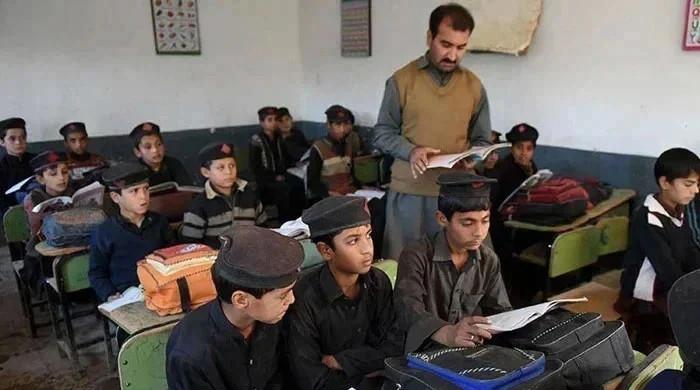- The KP government promises an action in the upcoming budget.
- Peshawar schools have severe infrastructure gaps.
- Educational emergency provided for in the most affected districts.
Thousands of children studying in more than 10,000 public schools in 28 installed districts of Khyber Pakhtunkhwa continue to be deprived of essential installations such as boundar walls, electricity, toilets and drinking water, according to a report from the department of provincial education.
The data reveal significant infrastructure deficiencies in the province’s public education sector. More than 5,000 schools are without electricity, more than 2,000 have no provision for drinking water and a similar number lacking sink rooms and boundary walls.
The report indicates that 2,211 primary schools have no electricity, with the largest figures recorded in Manshra (344) and Upper Kohistan (252). In Upper Kohistan, 208 schools are drinking water and 1,253 primary schools lack toilets.
Of the 160 colleges in the province, 136 are without limits, 71 lack drinking water and 57 have no toilet. In the provincial capital Peshawar, 21 schools are without electricity, 15 lack of drinking water, 17 have no toilets and 8 are without boundary walls.
Khyber Pakhtunkhwa lawyer, lawyer Muhammad Ali Saif, said the provincial government made efforts to deal with the lack of basic equipment in public schools. He noted that education had remained an absolute priority and that the Minister -in -Chief Ali Amin Gandapur had taken note of the issue and published directives accordingly.
He added that more resources would be allocated in the next budget to ensure that no public school remained without the toilet and drinking water installations.
SAIF also mentioned that districts with more than 50% children outside the school would see a declared educational emergency. In areas with an urgent need for school facilities, the government intended to establish schools in rented buildings to fill the gap.
These efforts are in the context of alarming figures recently published by the Department of Provincial Education, which show that 37% of KP children remain outside the school.
The previous report depicts a worrying table, revealing that 4.92 million boys and girls in the province are currently deprived of formal education.
The problem is the most acute in Kolai-Palas Kohistan, where 80,333 children are out of school. The neighboring districts of the lower Kohistan also record alarming rates, 79% of children not registered with an educational establishment.
On the other hand, Upper Chitral appears as the most efficient district in the province, with only 10% of children outside the school.
The provincial capital, Peshawar, has more than 500,000 children outside the school, including 319,000 girls, highlighting a large gap between the sexes in access to education.




